Art World
What’s Behind Contemporary Art’s Current Obsession with Animals?
A host of works, shows, and books are turning the art world into a zoo.
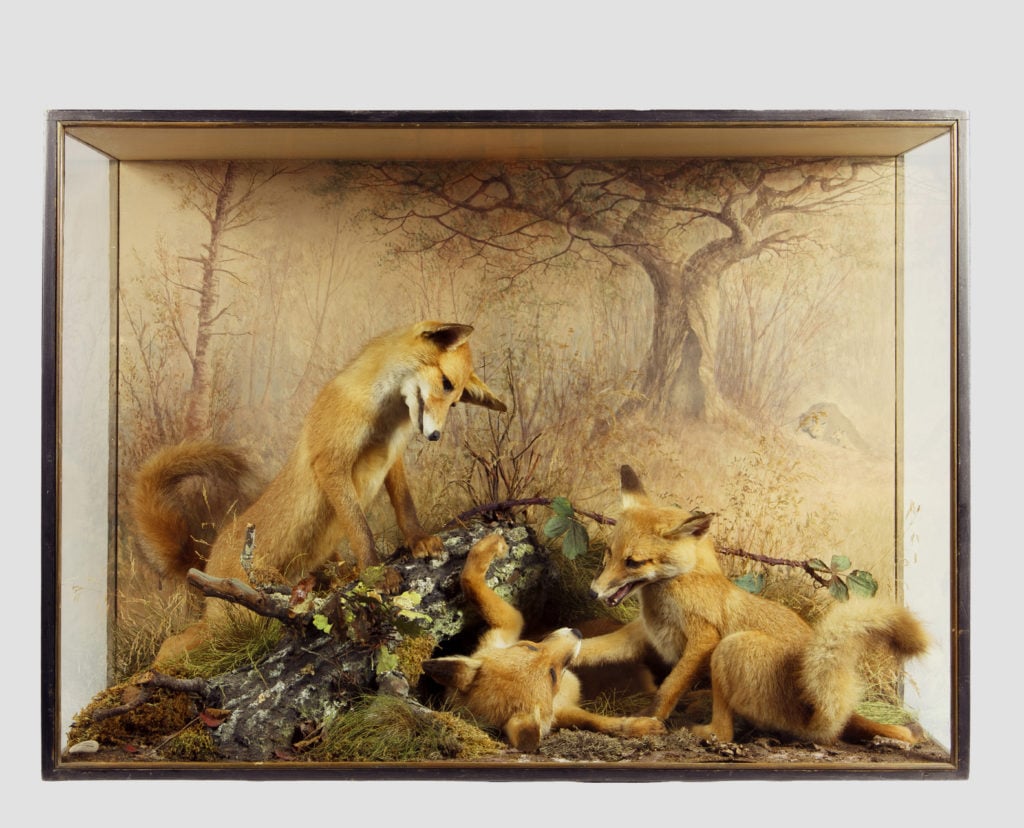
A host of works, shows, and books are turning the art world into a zoo.

Hettie Judah

The art world is an attractive habitat for snakes. Jackals and hyenas too. Peacocks? Definitely. Chameleons? Sure, if you know how to spot them. Sharks? Whales and minnows? Hares and tortoises? Cougars? Silver foxes? Bottom-feeders? Why, there’s a metaphorical menagerie out there, right now, mingling with the Miami flamingos. It’s the British art world, however, that’s undergoing territorial takeover by the real animal kingdom.
“Making Nature: How we see animals” which opens today at London’s Wellcome Collection, is the latest in a number of exhibitions, books, and significant artworks to examine the relationship between mankind and her fellow creatures. “Animality“, a show put together by Jens Hoffman, currently occupies the Marian Goodman Gallery, and Animals is the latest volume in Whitechapel’s Documents of Contemporary Art series.
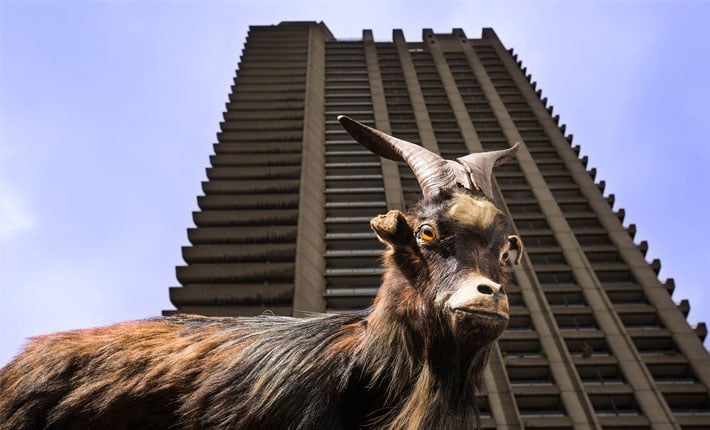
Bedwyr Williams, Visual for the show “The Gulch,” at the Barbican. Courtesy the artist.
Further afield we have goats courtesy Bedwyr Williams at Barbican and Robert Rauschenberg at Tate Modern, both also in London; Daphne Wright’s show at the Arnolfini, Bristol, includes Primate, a tribute to a rhesus monkey used for animal testing, and Stallion, a life-sized horse writhing on the floor. Beyond our shores, Pierre Huyghe (arguably the prime mover of this current wave of animal art) will see his Untitled (Human Mask), (2014) form part of the Guggenheim Bilbao’s special 20th anniversary program next year.
IKON in Birmingham, meanwhile, has announced a 2017 exhibition dedicated to the surreal nature films of Jean Painlevé. Painlevé’s peculiar, jazz-soundtracked footage of amorous octopi, vampiric bats, and battling aquatic creatures features alike in “Making Nature,” “Animality” and Animals, which suggests that the origins of this art world stampede are common rather than coincidental.
“It began really with interest in the anthropocene and human impact on the planet,” suggests Honor Beddard, curator of the Wellcome Collection show. “I think the explosion of animal literature and exhibitions is a deeper exploration.”
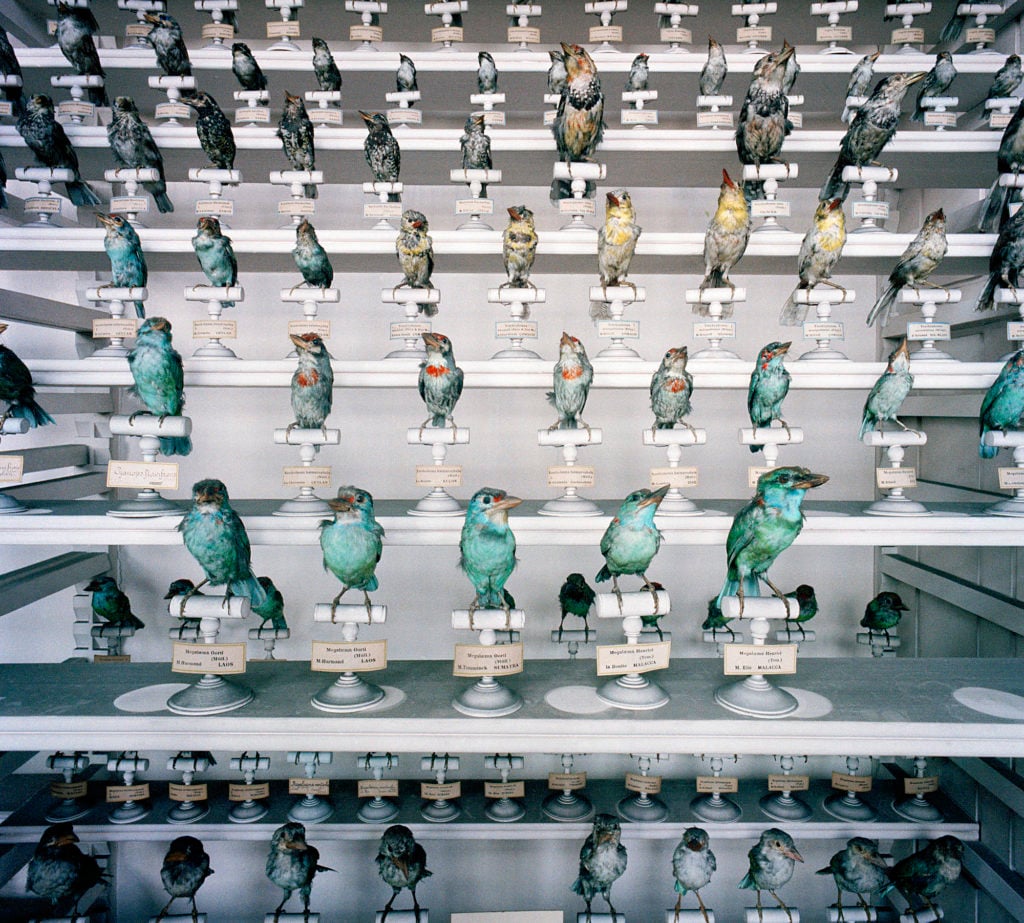
Richard Ross, Muséum National D’Histoire Naturelle, Paris, France (1982). Photo ©the artist.
The Wellcome exhibition is founded in collections of scientific and quasi-scientific objects, but its curators deploy contemporary artworks as alternate modes of representation. In “Making Nature” we encounter Edwina Ashton dressed as a giant moth listening to instructions on moth markings, habits and extermination. Allora & Calzadilla’s The Great Silence (2014) pairs moribund Puerto Rican parrots to footage of the Arecibo Observatory, suggesting the pains we take to observe worlds far away, even as the one we inhabit dies out.
Phillip Warnell’s extraordinary Ming of Harlem: Twenty One Storeys in the Air (2016) looks into the case of Antoine Yates, who shared a large flat in a New York tower block with a full-grown tiger and alligator. Yates explains his relationship with Ming as loving and spiritual, involving meditation and enrichment activities (such as spraying colognes in the air for them to smell together). Yates’s understanding of his relationship with Ming is only the most eyebrow-raising example of how the human relationship to animals becomes territory for projected fantasy of one kind or another. Placed side-by-side with documentation of dioramas from museums of natural history, and designs for zoo enclosures, “Making Nature” suggests, among other things, how modes of display have reinforced the enduring perception of behavioural stereotypes, alongside the “us on one side, them on the other” human/animal binary.
“Is it ever possible to look at nature without imposing meaning on it?” Beddard asks. “It’s through art and literature that you engage people. I think what we do through nature writing and exhibitions is bring in aspects—such as philosophy and psychology—that don’t really have a space in natural science.”
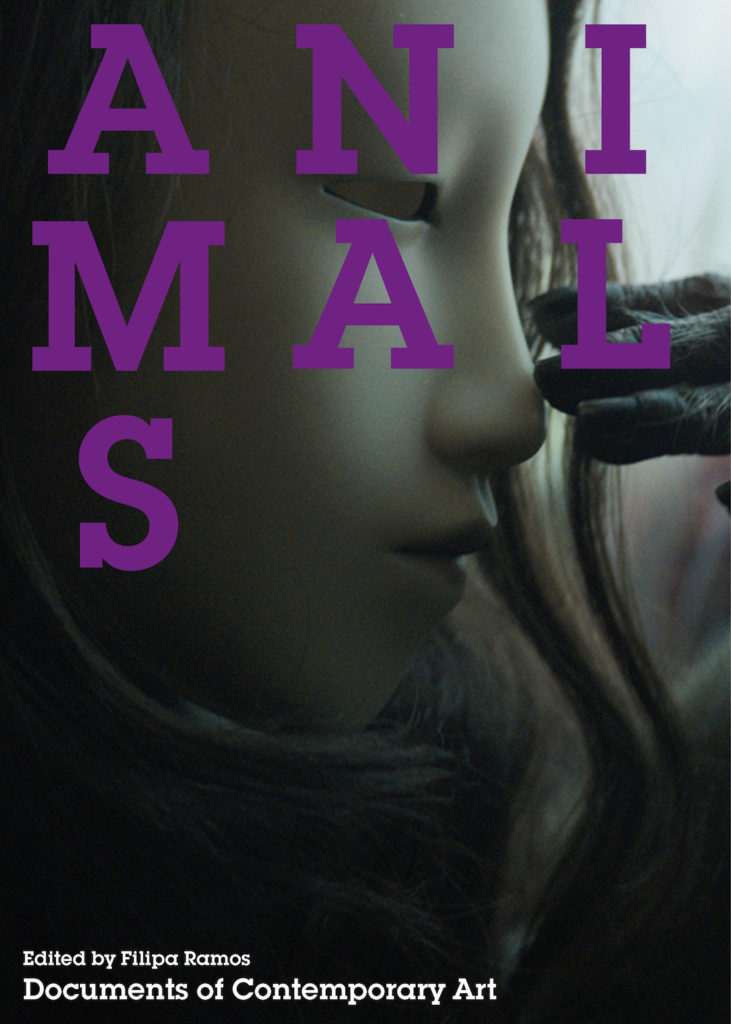
Animals, edited by Filipa Ramos (2016), from Whitechapel: Documents of Contemporary Art. Courtesy The MIT Press.
Animals, edited by Filipa Ramos, brings together texts by artists and philosophers as well as writers—such as Will Self—whose provocative fictions have offered a rich source of inspiration. Rather than a primer on animal related art, Animals is more of a common sourcebook, and something of a deus ex machina for the ideas that informed both “Making Nature” and Hoffman’s “Animality.” Many excerpts included in the book are familiar from artist and curator interviews in recent years, and, one suspects, are known to both Beddard and Hoffman. In the artworks, too, there is considerable territorial crossover: beside the Painlevé films, both exhibitions show works by Allora & Calzadilla, and photographs of stuffed animal displays by Hiroshi Sugimoto, among others.
Texts such as Walter Benjamin’s charming radio broadcast of dog tales (included in Animals) are a reminder that animals have been seen as the stuff of childhood, or as somehow sentimental. Out in the world of gold-framed oil paintings there are commercial galleries dedicated to animal-themed works, of course: often with a domestic or sporting theme. More recent art has tended to approach this whimsical territory slyly: think of Maurizio Cattelan’s headless horse and suicidal squirrel. These new exhibitions and books show how anthropocene concerns have driven out the taint of whimsy, and that animals and our relationship to them, for good or bad, are once more the stuff of serious consideration.
Those two Cattelan works now grace the covers of Sarah Thornton’s popular books on the art world—a reminder that, snobbery aside, animals sell—we’re drawn to them. This is particularly so, one imagines, in the animal-loving UK, where much of the country is currently glued rapt to the David Attenborough-narrated Planet Earth II (a series that “Making Nature” pointedly places on an anthropomorphic continuum with the films of Painlevé.)
Rather like the insects masquerading as sticks and leaves in Georges Didi-Huberman’s The Paradox of the Phasmid (also excerpted in Animals), the museum-esque “Animality,” with its facsimiles of superannuated natural history illustrations and didactic wall texts here feels like the “copy that has devoured its model.” Not of “Making Nature” specifically (“Animality” opened weeks before), but of institutional shows in general. Where art supports (and at times, supplies) the ideas in “Making Nature,” in “Animality” the ideas perform in support of the art—this being, after all, a show in a commercial gallery. And if visitor figures are anything to go by, it’s doing good business.
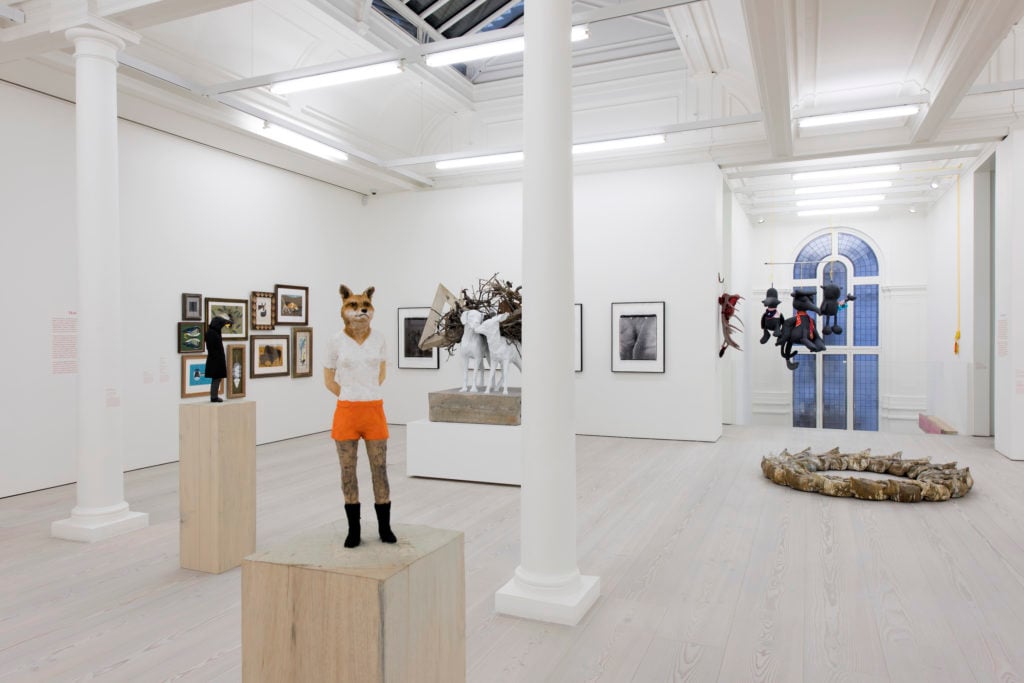
Installation view of “Animality” at Marian Goodman Gallery (2016),
a fairy tale story by Jens Hoffmann. Photo Thierry Bal, courtesy Marian Goodman.
Where Making Nature pushes into new territory, beyond the purview of either Animals or “Animality,” is in a final section dedicated to “post-natural” history: animals that have been altered by human intervention. These discomfiting exhibits include pedigree dogs and brightly coloured budgerigars, non-malaria bearing mosquitos, and alcohol-dependent rats developed for use in Finnish medical laboratories.
These animals are human creations, every bit as much as the artworks.